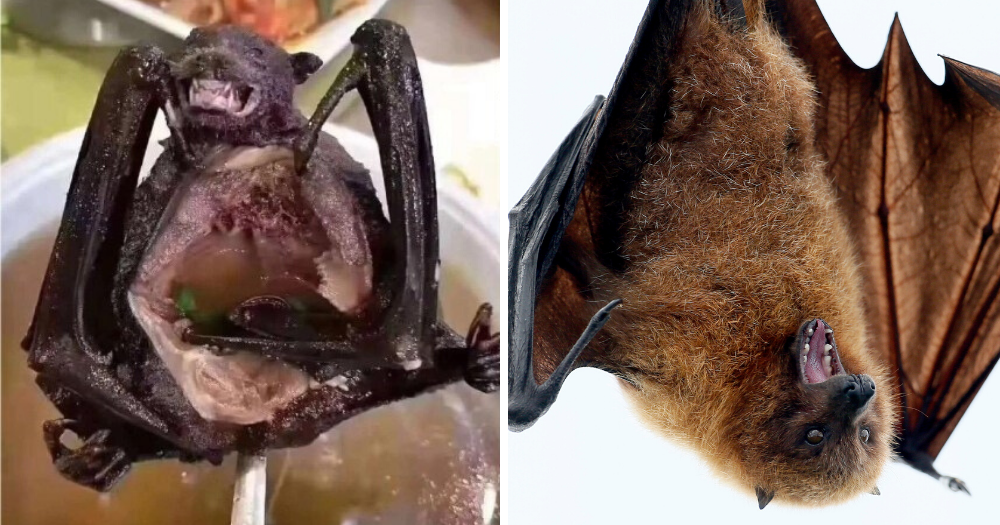In the midst of the Wuhan virus crisis that has left 56 dead and infected over 2,000 people worldwide, animals are suspected to be the source of the novel coronavirus.
A seafood market that sold an outrageous variety of live wild animals for consumption, including peacocks and wolf pups, was shut down since the outbreak.
A deadly cocktail of factors, including the close proximity between humans and wild animals, coupled with the cramped and unsanitary conditions there, could have resulted in the original spread of the virus.
From bats to snakes to humans
Although it is still unclear which species the virus truly originated from, experts have speculated that bats may be the original source.
Recent studies that analysed the protein codes in the novel coronavirus found that it was similar to those viruses found in snakes.
Snakes though, are known to hunt for bats in the wild.
It is thus possible that the virus might have jumped from the host species, bats, to snakes and then humans.
It is known that snakes were sold at the Huanan Seafood Market.
Not only could bats have been the original source of the novel coronavirus, the severe acute respiratory syndrome (SARS), Middle East respiratory syndrome (MERS) coronaviruses, and the Ebola virus all came from bats.
The 2003 SARS epidemic originated from bats, which then transferred the virus to civet cats,, which were consumed by humans.
But why bats in particular?
Bats' bodies able to limit inflammation
In February 2019, a team of researchers from Duke-NUS Medical School discovered why bats are so capable of hosting and transmitting such deadly viruses.
While most animals typically die from these viruses, bats are able to harbour these pathogens without suffering from the disease.
This is due to their unique ability to limit inflammation, reported Science Daily.
Other animals and humans have a protein sensor, NLRP3, which reacts to infections by triggering an inflammatory response in the body to fight stress and infection.
However, researchers found that NLRP3 barely reacts in bats compared to mice and humans, even in the presence of large viral loads.
Dr Matae Ahn, the first author the study, said this is the "key mechanism underlying [bats'] long lifespans and unique viral reservoir status".
Additionally, they found that "transcriptional priming", a key process in making NLRP3 proteins, is significantly reduced in bats.
The researchers also found unique variants of NLPR3 present in some bat species that render these proteins less active.
Survive to pass on viruses to other beings
These bat-specific adaptations are what enables bats to develop a higher tolerance towards infections, enabling them to survive to pass on the viruses to other animals.
"Bats appear to be capable of limiting excessive or inappropriate virus-induced inflammation, which often leads to severe diseases in other infected animals and people," said Professor Wang Lin-Fa, Director of Duke-NUS' EID Programme and senior author of the study.
Learning these things can help researchers devise solutions for controlling the spread of infectious diseases between animals and humans.
Currently, there does not seem to be a vaccine available for the novel coronavirus.
Experts, however, have estimated that it could take up to three years to develop and distribute a vaccine.
One piece of good news though: China has imposed a temporary ban on the trade of all wild animals.
Top photo from Liberty / Twitter and Reuters
If you like what you read, follow us on Facebook, Instagram, Twitter and Telegram to get the latest updates.
